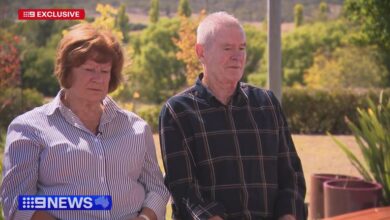Clever connections
Just as a round of government funding gets underway, new research looks at the growth of teaching nursing homes in Australia and highlights the role they can play in improving quality of care and countering workforce issues. Darragh O Keeffe reports.
The majority of the teaching nursing homes currently operating in Australia are in metropolitan areas, are large in size and serve a diverse range of clients. These are the among the findings of new research which looked at the emergence of teaching nursing homes in Australia, as well as the various models in operation. Current initiatives, which have developed at the local level, span from the traditional facility-university partnership to more elaborate models involving several partners.
The extent of the partnerships ranges from simply securing placements for students to multi-faceted programs of research, training and collaboration.
The scoping study, conducted by Australian Institute for Social Research (AISR) at the University of Adelaide, was commissioned by the Department of Health and Ageing to inform implementation of the government’s $4 million Teaching and Research Aged Care Services (TRACS) initiative, which will fund further growth of teaching nursing homes.
The study consisted of a literature review, which also compared the Australian scene with that of the US, Netherlands and Norway, and a series of interviews with stakeholders. It was conducted by Dr Kate Barnett, deputy executive director, AISR; Professor Jennifer Abbey, Faculty of Health Sciences, University of Adelaide; and, Jonquil Eyre, consultant.
Reasons behind emergence
Several key factors have prompted the growth in teaching nurse home initiatives, the scoping study found. These included workforce issues, the need to provide quality clinical placements for students, and the push to improve quality of care.
The desire for focussed and practical research, which is most likely to result from academic involvement at the coalface, and the promotion of a “learning culture” in residential facilities were other key drivers.
“Workforce ageing and the recruitment and retention of qualified staff are key issues for the sector which is characterised by low status, relatively low pay rates, and high rates of turnover... (As well as) insufficient incentives and opportunities for aged care staff in continuing education and professional development,” the paper said. “The [teaching nursing home] model, through its partnering of aged care and education providers, is seen as addressing this issue for those involved in such an affiliation, and may provide leadership for wider industry opportunities.”
Of the clinical placements issue, the paper said teaching nursing homes support “effective working relationships between service and education providers” and such relationships are “critical to the design and delivery of clinical education”. The paper said the role of clinical research to create an evidence base for improved clinical care was another key feature of the model, and there was “substantial evidence” the initiatives could aid in achieving this outcome.
State of play
Examining the progress to date of teaching nursing homes, the researchers said they were made aware of 17 initiatives; seven were still operating, five were in the early stages of development, four had “lost momentum”, and one involved a VET provider which did not include a research component and therefore was more “accurately described as a “student placement collaboration”.
The majority of these initiatives were located in metropolitan locations, followed by outer metropolitan sites. None were in a remote setting, and just five interviewees identified a rural location, the paper noted.
In terms of size, most participating facilities were large, which the researchers said reflected a trend in their literature review that a critical mass was necessary. Some 27 per cent of the facilities were 51 to 100 beds; 27 per cent were 101 to 500; 23 per cent were 501 to 1000 and a further 9 per cent had more than 1000.
The majority of facilities had clients with a variety of special needs, which the researchers said was beneficial as it would facilitate a diversity of learning experiences for students.
In terms of the students’ disciplines, both the literature review and stakeholder interviews identified that nursing was the predominant. “There was also a trend for allied health involvement, particularly involving physiotherapists and occupational therapists. In a few instances, medical practitioners were part of training,” the paper said.
Key ingredients
The paper identified a list of “enablers and barriers” to successfully creating and maintaining a teaching nursing home.
Unsurprisingly, funding topped the list; with financing required to meet the establishment costs, which included the physical infrastructure and human resources to support learning, as well as recurrent funding.
Effective communication between the parties and a shared understanding of the goals of the initiative were also essential, the paper said.
Given research is a key component of most teaching nursing homes, processes to address residents’ rights and ethical questions were key, as was the need for strong leadership by both the facility and the education provider.
To facilitate quality clinical student placements, a robust orientation program was essential, as was clinically-related learning and up-skilling opportunities for staff, the paper said.
Having the right mindset was also of paramount importance, according to lead author Dr Barnett.
She said that it was essential both parties were committed to learning from each other and were open to changing their processes.
“The key ingredients were being receptive to new practices and learning, using research, and being committed to good training,” said Barnett.
She said that having incentives to collaborate was essential, given a considerable amount of work was involved, some of which wouldn’t be funded. .
It was also important that each partner appointed a staff member to oversee the project’s development and implementation.
“The key is to fund people in these specific roles, rather than just putting that responsibility onto staff already dealing with heavy workloads,” said Barnett. “For me that’s the critical enabler. You’ve got to invest, you can’t rely on goodwill.”
Barnett said facility staff often required professional development in order to provide the right kind of support to students on placement, and the researchers had seen several models where that had been factored in.
Exposing nurses to aged care
The researchers identified a host of benefits for both parties when teaching nursing homes were successfully operated.
When stakeholders were asked their views, “positive learning environment” topped the list of benefits. They appreciated the synergies created between research, education and care.
Enhancing the capacity of care staff to address complex health and care needs and staff retention were also seen as benefits by those involved in initiatives. Staff recruitment was also cited, given the likelihood of quality placements encouraging students to work in aged care following graduation.
The paper listed additional benefits as: leading to innovation, changing ageist views among students, and, encouraging staff to enhance their own skills.
Barnett said one unexpected benefit was the exposure to aged care for nurses, the majority of whom train in acute settings.
“In previous research that we have undertaken, interviews with nurses working in aged care found that moving from the acute care sector had been a massive cultural shift; one which they were happy about as they could form relationships with residents more easily than with patients in a hospital, even if it involved reduced salary. The more nurses, in particular, can learn and experience aged care before they actually go to work there, the better prepared they will be.”
Within the broader agenda
Putting its snapshot in context, the paper highlighted the government’s recent announcement of funding to support the further growth of teaching nursing homes.
The government is providing $4 million until 2013/14 under the Teaching and Research
Aged Care Services (TRACS) initiative. (The initiative’s name was changed as there is an emerging view that the term “teaching nursing home” is dated). The deadline for expressions of interest closed early November. When asked about the response from providers, DoHA staffers managing the program said they were confident there had been “a good level of interest” from those the program was targeting.
Asked when the successful tenders would be announced, they said DoHA was aiming for early next year.
Email: [email protected]





